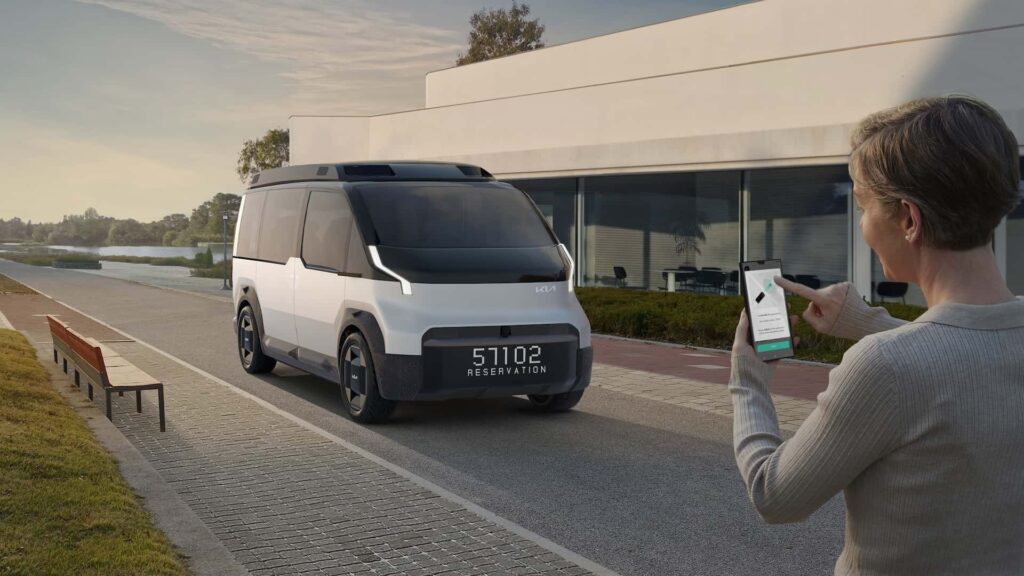Someday, you may have to say goodbye to rides to the airport in humdrum Toyota Camrys and Honda Accords. Kia’s futuristic electric vans have won over their first customer: Uber.
The two companies announced last week that they’ve signed a memorandum of understanding to use Kia’s upcoming “Platform Beyond Vehicle” (PBV) vans as ride-hailing vehicles. It’s a win-win; Uber aims to use exclusively zero-emission vehicles by 2040, and Kia needs buyers for the new family of commercial models coming in 2025.
Get Fully Charged
Uber and Kia make an EV deal
Uber wants to transition its entire fleet to electric vehicles by 2040. A new line of Kia vans could help make that happen.
Kia announced the line of toaster-shaped PBV models at CES last week. The idea is to offer several different vehicle types—robotaxis, delivery vans, pickup trucks (potentially)—that all use a shared platform and driver compartment, simplifying manufacturing. The medium-sized PV5 will be Kia’s first offering, followed by larger and smaller variants.
Together, Kia and Uber will “identify optimal specifications for PBV models” and develop “PBVs tailored to the needs of drivers that use the Uber platform,” the companies said. The announcement was light on specifics about what that ride-hailing vehicle could look like but did mention “interactive rear seat entertainment systems” as a potential feature.
The PV5 concept that Kia trotted out at CES showcased another feature that could prove useful for Uber drivers and riders: a TV-sized screen embedded in its front bumper. Flashing a rider’s name or a specific code could take the guesswork out of hopping into the right car.
One potential hurdle here: Uber doesn’t provide vehicles for its drivers, who are independent contractors. That complicates its whole plan to clean up its fleet, which it’s doing as regulations restricting the sale and use of gas-powered vehicles intensify around the globe. The companies say they’re working on ways to reduce the up-front cost of buying a PV5 and are exploring solutions like a battery subscription option. (An EV’s battery is typically its most expensive single component.)
Down the line, Kia plans to introduce a sensor-covered PV5 that would serve as a robotaxi for Motional, a joint venture between Hyundai Motor Group (Kia’s parent company) and Aptiv (an automotive supplier).
Contact the author: tim.levin@insideevs.com


